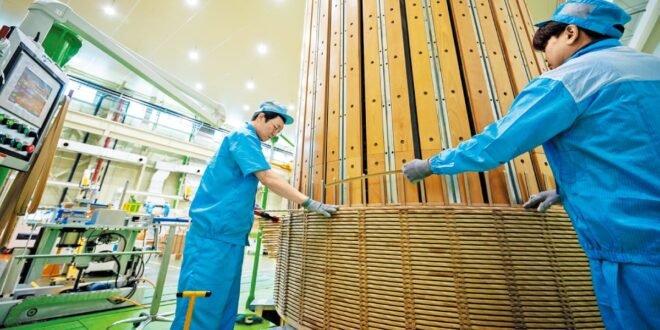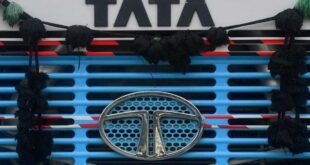Expansion of South Korean Power Equipment Industry in the U.S. Market
South Korea’s LS ELECTRIC, a subsidiary of the LS Group focused on power and automation systems, has recently secured a significant contract worth 170 billion won ($123 million) to supply ultra-high-voltage transformers to renewable energy facilities across several western U.S. states. The company will manufacture these components domestically and is set to begin shipments in 2027.
This development highlights a broader trend in the South Korean power equipment industry, which has traditionally concentrated on domestic markets and sectors such as automobiles and semiconductors. However, with the growing demand for grid modernization driven by advancements in artificial intelligence and the rapid expansion of hyperscale data centers, the industry is now looking to expand globally.
Industry experts suggest that as the U.S. turns to Korean shipbuilders and European buyers rely on Korean defense contractors, there is an increasing expectation that Korean power infrastructure firms will play a major role in the future. This shift reflects a growing recognition of the capabilities and reliability of South Korean manufacturers in the global market.
Challenges in the U.S. Power Grid
The U.S. power grid is facing significant challenges due to its aging infrastructure. As digital expansion continues, the existing power lines are struggling to meet the rising demand, particularly in tech hubs like Silicon Valley, where outdated lines often result in blackouts. The construction of massive data centers by big tech companies is further increasing the need for high-capacity electrical systems.
According to the International Energy Agency (IEA), global electricity consumption from data centers is expected to more than double by 2030, surpassing Japan’s current national usage. However, the IEA also warns that 20 percent of planned data centers may not operate as intended due to insufficient grid infrastructure. This issue is compounded by the unprecedented volume of grid connection requests faced by U.S. utilities, posing serious challenges for expansion efforts.
Rising Orders and Strategic Investments
In response to these challenges, Korean manufacturers are experiencing a surge in orders. LS ELECTRIC’s North American revenue increased from 13 percent of total sales in the first quarter of 2023 to 24 percent during the same period this year. More than half of the company’s new orders for switchboards and high-voltage transformers in Q1 originated from North America.
Another major player, Hyosung Heavy Industries, recently secured a 264.1 billion won order for ultra-high-voltage circuit breakers from a U.S. utility, marking the largest single contract in the company’s history for that product line. The company’s power equipment backlog stood at 10.4 trillion won as of the first quarter, followed by LS ELECTRIC with 3.9 trillion won and HD Hyundai Electric reporting a backlog worth $6.16 billion, or about 8.4 trillion won. Combined, these three firms hold over 22 trillion won in outstanding orders.
To meet the rising demand, Korean companies are ramping up local production in the U.S. HD Hyundai Electric is investing 185 billion won to expand its plant in Alabama, while Hyosung plans to double capacity at its Memphis, Tennessee, site. LS ELECTRIC has already completed the construction of its “Bastrop Campus” in Texas to supply power systems for large-scale tech data centers.
Technological Edge and Geopolitical Factors
What sets these companies apart is their technological edge. High-voltage transmission requires sophisticated engineering to minimize energy loss, and Korean firms are known for their ability to design and deliver advanced systems at scale. Additionally, geopolitical factors are playing a crucial role. Similar to defense and shipbuilding, the power sector is often tied to national security, prompting U.S. and European buyers to favor firms based in allied nations.
Korean companies are also gaining recognition for their reliability in delivery and execution, which is essential in an era of tight energy timelines. This combination of technological expertise and strategic positioning is helping South Korean power equipment firms establish a strong presence in the U.S. market and beyond.
 Info Malang Raya Its All About World News
Info Malang Raya Its All About World News



